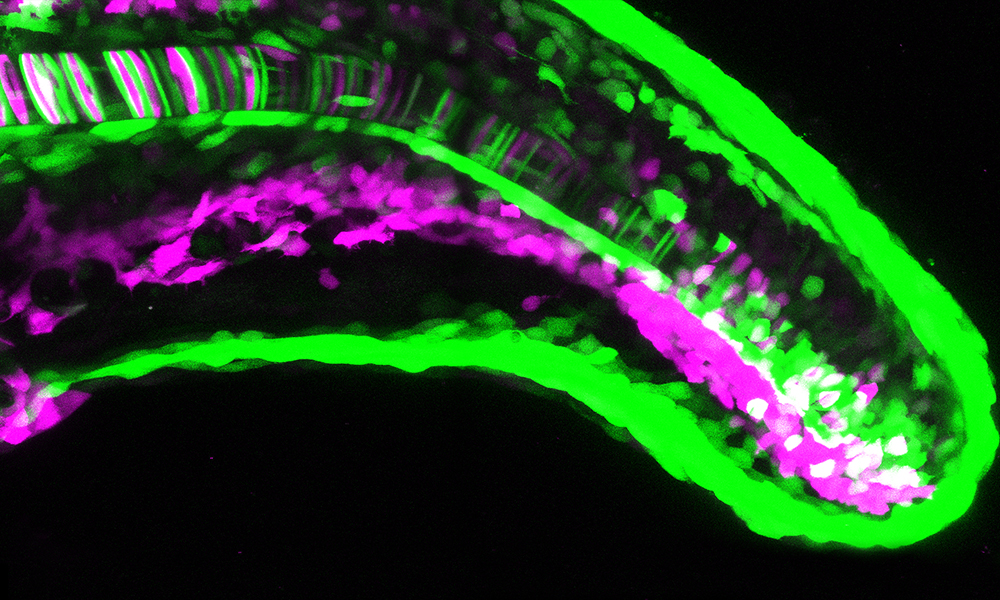Strength of interactions in the Notch gene regulatory network determines patterning and fate in the notochord
eLife 6 Jun 2022
10.7554/eLife.75429
How do gene expression patterns result in the generation of different cell types? Scientists at EMBL Heidelberg used the zebrafish notochord to find out.

The information necessary to build an organism resides in its genome. For an organism to function as it should, each tissue requires particular cell types in specific numbers and locations. When an embryo develops, gene regulatory networks (GRNs) turn on and off specific genes that determine what kind of functions specific cells carry out and which tissues and organs they will form.
Researchers in the Diz-Muñoz group at EMBL Heidelberg have now shown that the zebrafish notochord is a useful experimental system in which to study how GRNs regulate pattern generation during organ development.
The notochord is a cellular structure that forms during embryonic development. It is important for the development of the nervous system, and becomes part of the spine in vertebrates, including humans. Understanding notochord development is relevant for understanding potential developmental causes of spine malformations such as scoliosis and certain types of back pain. At the same time, the notochord is a useful system for scientists to study cell differentiation. It contains only two cell types in a well-defined arrangement, making it possible to apply experimental and mathematical approaches to understanding how GRNs work.
This video shows the development of the zebrafish notochord under an AiryScan microscope. Cells differentiate over time, with an initial linear arrangement of coin-like cells slowly giving rise to a more complex structure. Some cells grow to include a large vacuole (vacuolated cells) while others move to the sides to create an external epithelium (sheath cells).
The researchers used this model to study Notch lateral inhibition — a mechanism that coordinates cell differentiation. Once a cell decides to become a specific cell type, it uses a cellular pathway called Notch signalling to let their neighbouring cells know that they should form a different cell type. So far it has been difficult for scientists to study exactly how interactions between the different Notch signalling components lead to the generation of patterns that are necessary to form specific tissues.
With their combination of experimental approaches and mathematical simulations, the researchers in Alba Diz-Muñoz’ group identified general principles of gene expression pattern generation and coordination of cell differentiation events. The principles of Notch signalling they elucidated will help scientists to better understand how cell fate decisions are made in other tissues and organs, from the retina to the liver.
eLife 6 Jun 2022
10.7554/eLife.75429